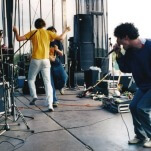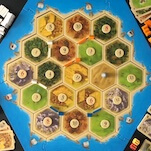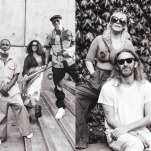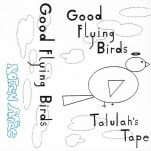An Improbable Home Takes Shape in Earnest Documentary Secret Mall Apartment
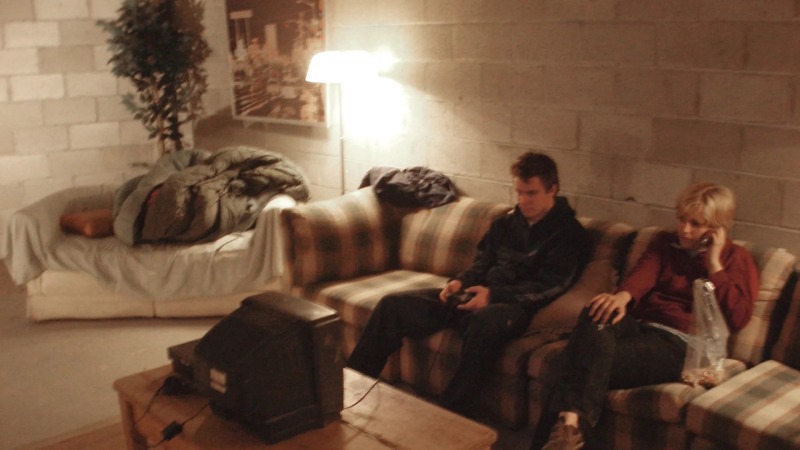
It should be viewed as a fundamental truth of modern life that one of the strongest shields against discovery of a secret is the simple, natural assumption that “No one would be ____ enough to do ____.”
Boundary pushing, rule-breaking boldness that circumvents the bounds of polite society will always thrive when set against this kind of expectation that everyone will simply follow the rules. Security systems and guards in a public place, for instance, function largely as a visible deterrent, not as forces designed to actively root out or thwart rulebreakers. You’re meant to see a security camera and assume that it means things in that location are being rigorously monitored, even if that’s the furthest thing from the truth. But occasionally, a person or group of people does come along who care little enough about potential consequences that they’re willing to push past the boundaries, just to see what might happen–just to confirm that they in fact can. And when those highly motivated people discover easily exploited cracks in the system, that’s how you end up with a Secret Mall Apartment situation.
Secret Mall Apartment is a documentary from director Jeremy Workman and producer Jesse Eisenberg, chronicling the true story of an unconventional, altruistic, authority-deriding group of Rhode Island artists, who in the mid-2000s decided to covertly create an apartment-style living space hidden inside the massive Providence Place shopping mall. From 2003 to 2007, members of the group furtively moved furniture into the space, rigged it with electricity and even constructed a wall and door to more effectively sequester themselves, until their hidden dwelling space was finally discovered more than four years after they first began working on it. The documentary brings those members back together for the first time in 17 years as they reminisce about both the anarchistic delight of the project and their shared artistic missions in Rhode Island and beyond.
The central figure of Secret Mall Apartment is artist Michael Townsend, a convivial, outgoing and empathetic artist and art teacher who gradually coalesced a like-minded group of people who read as both friends and to some extent “followers,” given that many of them were his art students. The ultra-ambitious, almost manic Townsend had for years been embarking on large-scale art projects that skirted the bounds of legality, such as filling a large space under a Providence railway tunnel with dozens of suspended mannequins in a creepy but beautiful display of surrealism. The various other figures who contributed to the secret mall apartment speak of Townsend as a sort of invigorating artistic force, a guy who came along and changed their lives in profound ways. There’s an almost cultish tone to it, but in truth it just seems to be a level of frank sincerity that we rarely see people openly express–everyone in the group is so outgoing and friendly, so seemingly lacking in real-world motives such as money, that they read as foreign to us when we’re embedded more traditionally in capitalistic American society. At the same time, Workman also captures hints of the clear downside of Townsend’s Peter Pan-like “innocence” and mentality, in the way his romantic relationship with another member of the group crumbled as he shoved more concrete “real world” concerns aside to continue working on more esoteric pursuits like an “apartment” hidden in the walls of a shopping mall. You certainly get a sense of how impossible it would be to be in a relationship with someone who values ironic artistic expression over just about everything else in life.
The biggest boon for Workman, meanwhile, is how much of his job was effectively done for him by Townsend and the others in the mid-2000s, as they rigorously documented the building of the secret mall apartment via small digital cameras purchased at the mall. One would expect a documentary of this nature to be full of reenactment footage, but almost none is needed–the young people who holed up in the apartment were filming constantly as they completed such tasks as lugging cinder blocks up through a human ladder before mortaring them together into a brand new wall. Members of the group acknowledge, in retrospect, that they got away with the project much easier thanks to the fact that they were well-educated white kids, more able to easily talk their way out of the occasional confrontation or questioning from police or security. “I’m certain looking back on it that we had a shield of white privilege around us,” says one member, after we’re shown Townsend coming up with a convincing lie on the spot when police questioned why they were bringing cinder blocks into the building through a security door. And again, the endeavor was protected more than anything else by how absurd it all was: If you saw someone bringing a cinder block or chair into the mall, would your first thought be that they were constructing a clandestine studio apartment there? I rather doubt it.
-

-

-

-

-

- Curated Home Page Articles By Test Admin October 21, 2025 | 3:10pm
-

- Curated Home Page Articles By Test Admin October 21, 2025 | 2:57pm
- Urls By Test Admin October 21, 2025 | 2:57pm
- Curated Home Page Articles By Test Admin October 21, 2025 | 2:55pm
-

-

-

-

-

-

-

-

-

-

-

-

-

-

-

-

-

-

-

-

-

-

-

-

-

-

-

-

-

-

